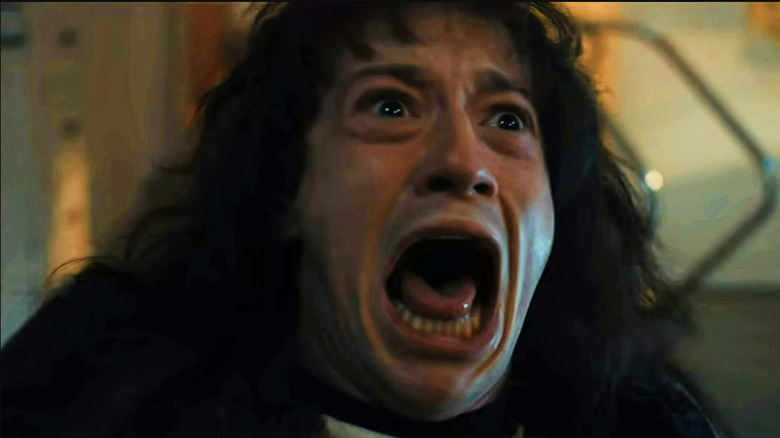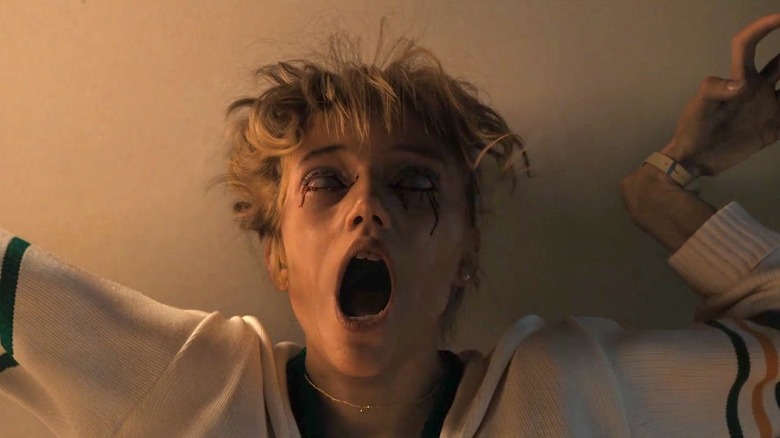A Mind-Bending Amount Of Detail Went Into Stranger Things' CGI Actors
Season 4 of "Stranger Things" provided some of the most incredible visual effects in the show's history, with the introduction of Vecna and his realm in the Upside-Down. The series has showcased plenty of explosions, action sequences, creepy creatures, and small glimpses of the demented realm, but the most recent season had our faves exploring uncharted territories for a majority of the runtime. Up until now, the worlds of Hawkins, Indiana and the Upside-Down had been separated with small blips of passageways, but now the boundary has been completely severed, and we can only guess what fresh hell awaits the "Stranger Things" gang in the final season.
The ambitious new designs of the Upside-Down, the monster inhabitants, and the horrific aftermath of the humans destroyed by Vecna provided some of the most shocking moments of season 4, but were executed so fantastically, "Stranger Things" rightfully snagged an Emmy nomination for Best Visual Effects. In a recent interview with Screen Rant, VFX supervisor Julien Héry provided some insight into just how much work went into bringing these nightmare scenarios to life. Héry works at Rodeo, who have provided the VFX for "Stranger Things" the last two years. In particular, Héry shed light on how Vecna's victims were made to look so gruesome. "There's a tremendous amount of work going on in those shots," he said. "This is the most high-resolution digi-doubles that we did at Rodeo, we started with plate work with the actress, that gave us ideas of what it would look like for real."
Recreated down to the pore
Héry said the creation started by scanning the actors, and built the CGI recreation with such high resolution that each pore was modeled. "We groomed the hairs to match the actors, we also groomed the face, all the tiny hairs that are there on the difference, the blood accumulation on the skin, we modeled so much." He continued explaining that they had to include a layer of water on top of the eyes, because whenever audiences were seeing a character being killed by Vecna, we're seeing a full CG shot. "We basically erased the actress and added a full CG model," he said.
In addition to the digital recreation of human actors, the team also had to do a lot of research into the way human bodies could realistically be snapped, broken, and manipulated. "All the bone-breaking — we researched on the internet for the worst injuries we could find, for example with football players," he said. "We knew we didn't want open wounds, we wanted to break bones but it had to feel nasty without being nasty and gory."
Héry and his team focused on the injuries of football players and professional fighters, mostly, and began to design each break accordingly. "We researched all these injuries, not open wounds but very gross to look at, and then we started to model each break and give it a sense of all the different layers; the fat, how you can see the bone affecting the fat layers and touching the skin," he said. "It was an amazing piece to work on, very interesting to work on those ones."

